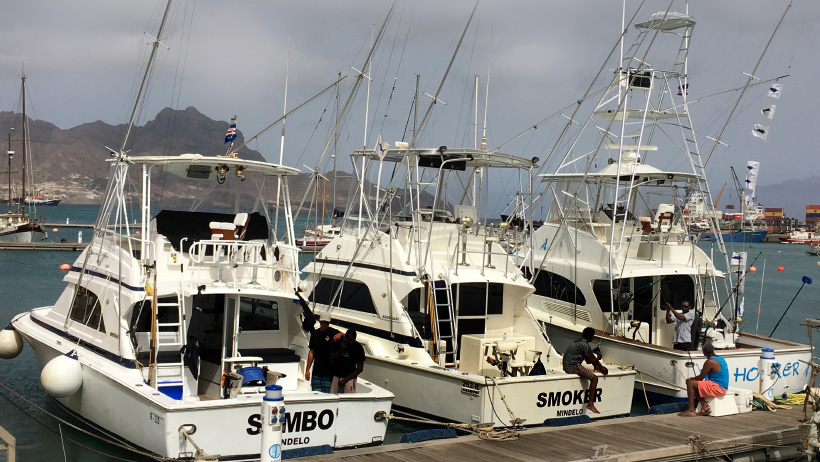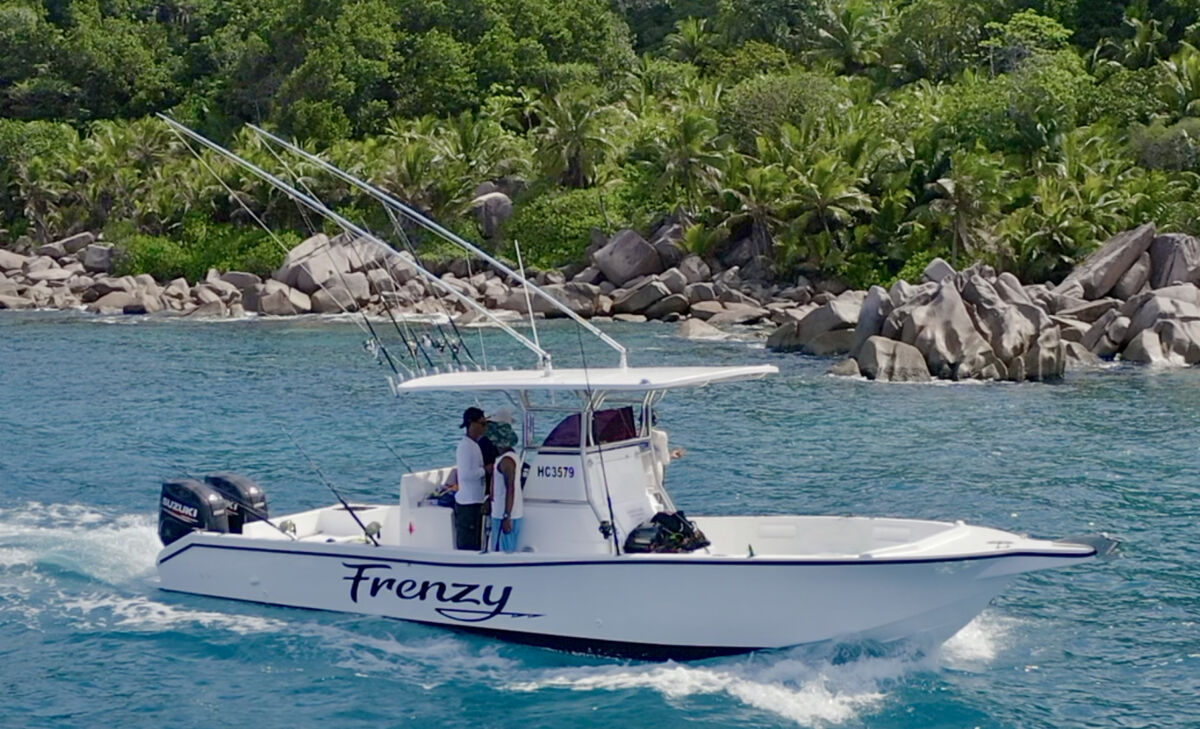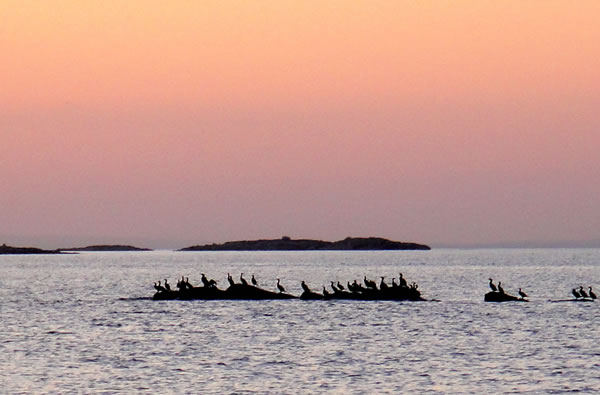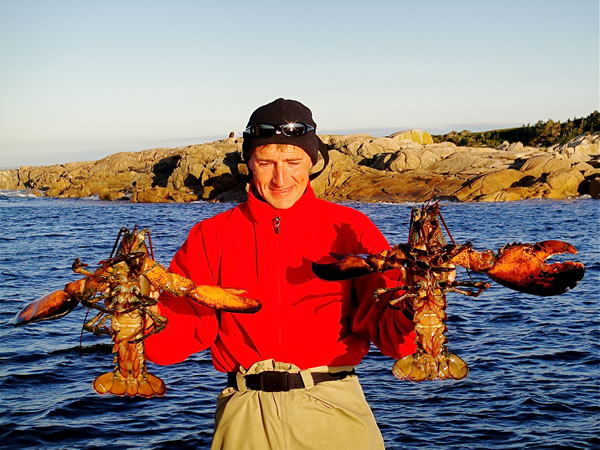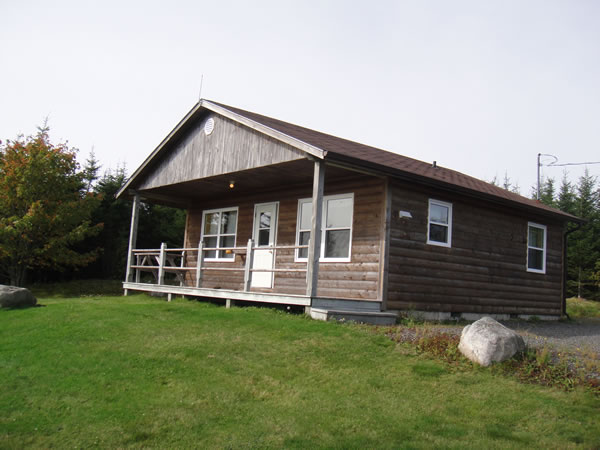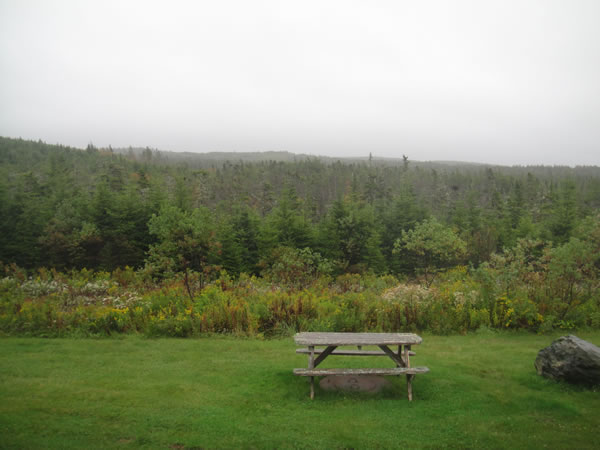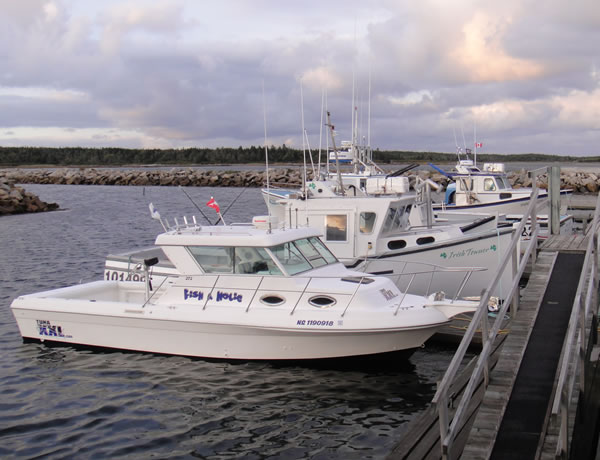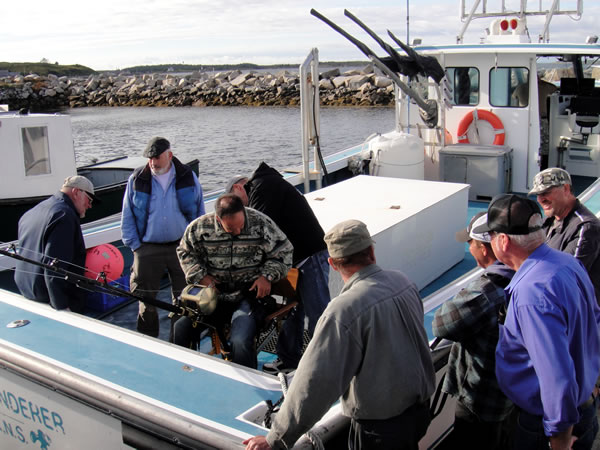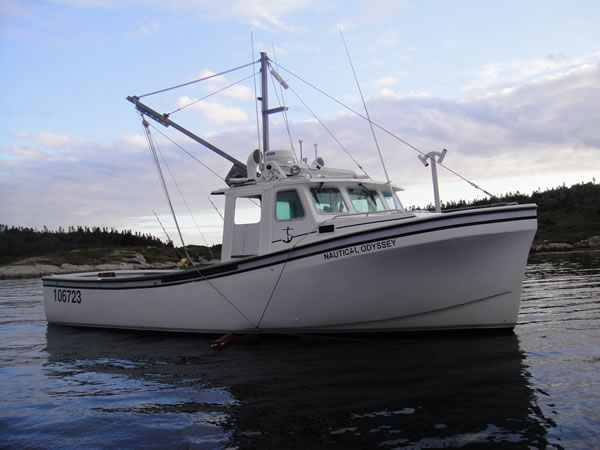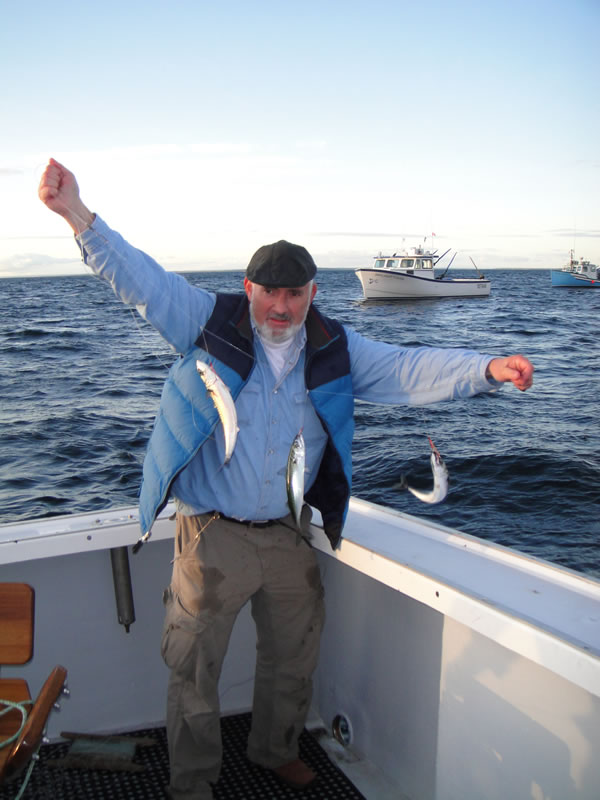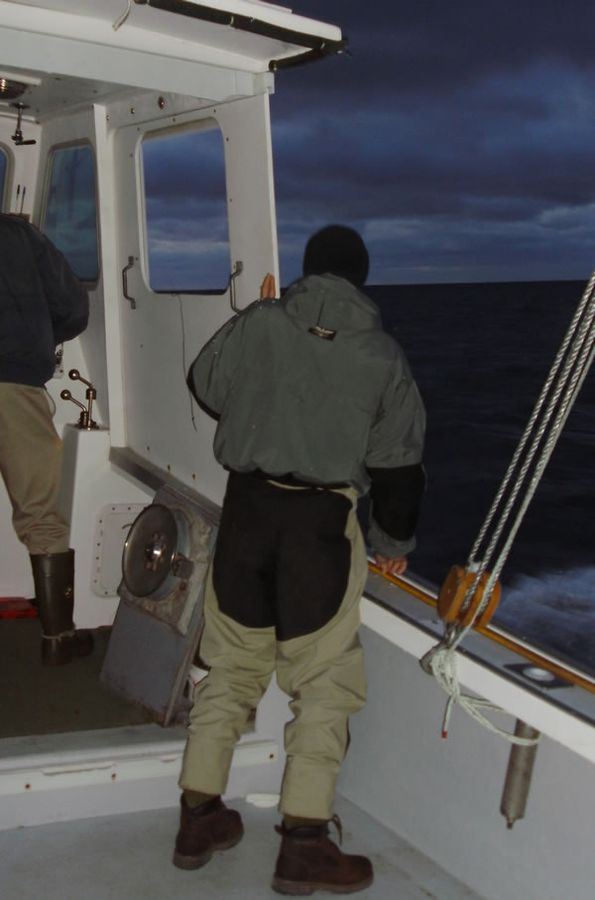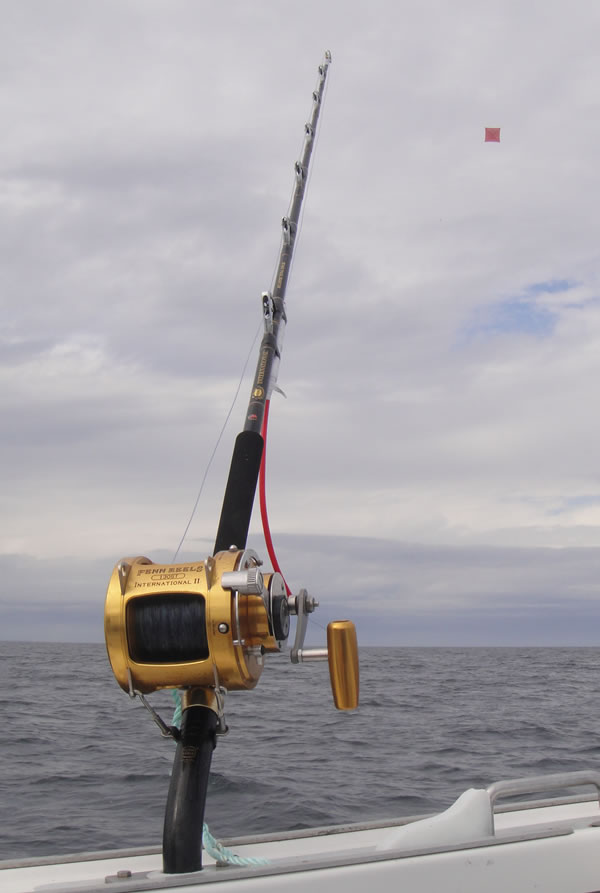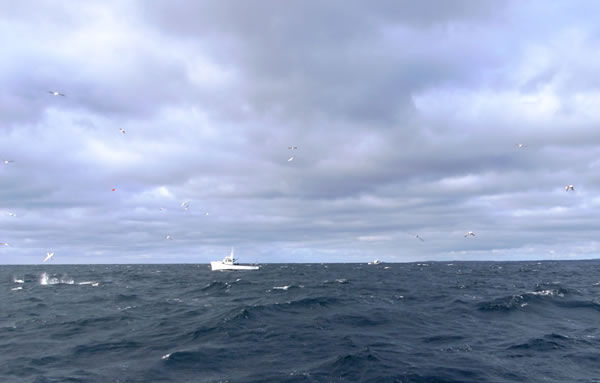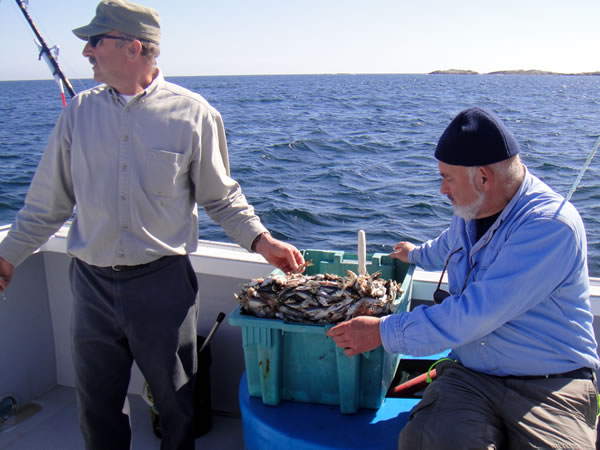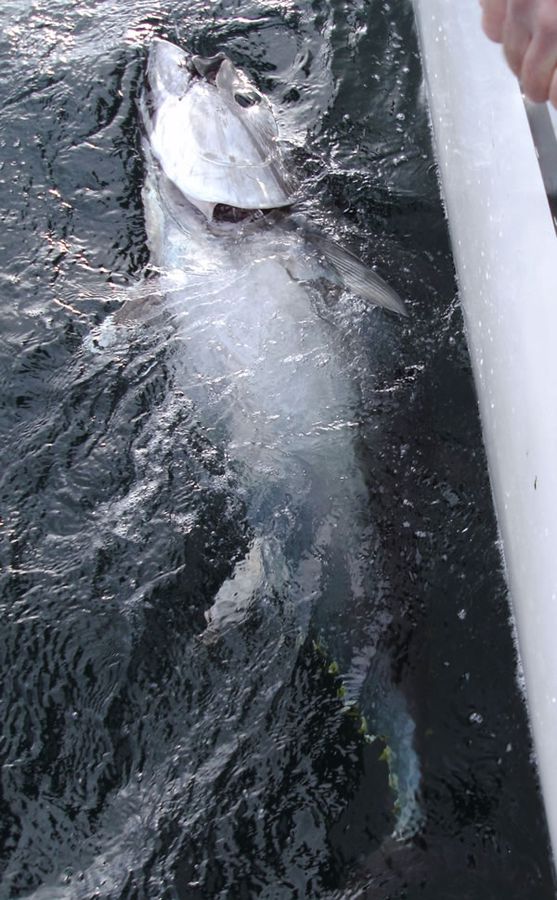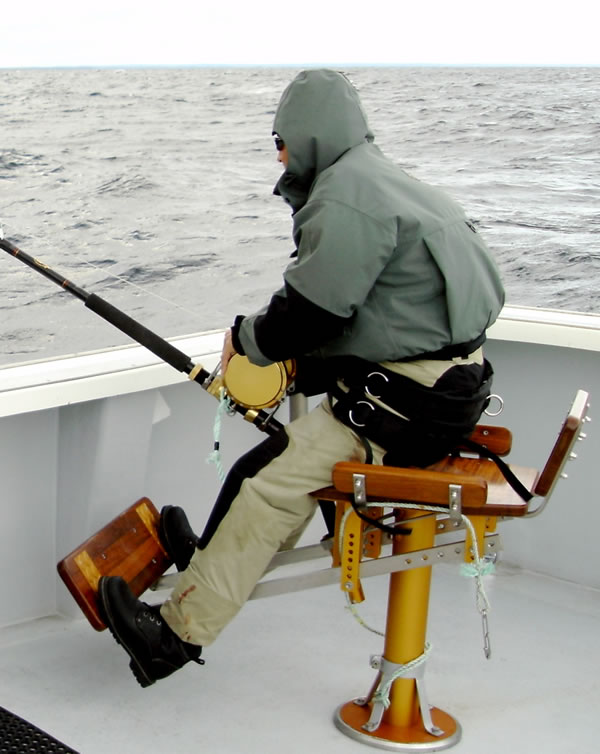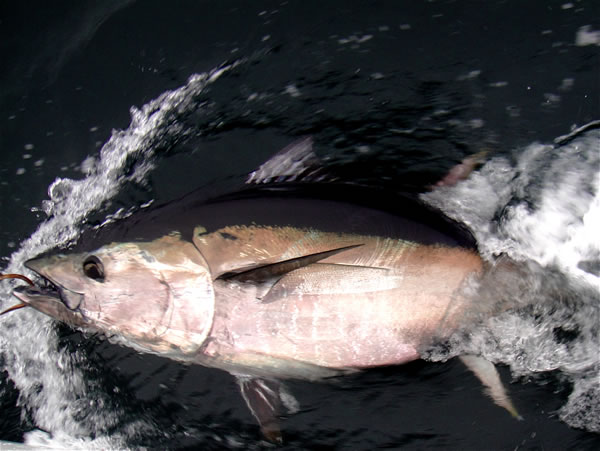Canso, Nova-Scotia, Indian Summer 2009
»One dream, one team and the early birds caught the biggest!«
How everything started:
On the 4th of December 2008, we found an additional comment in our website guest book: “Hello, you guys have a really nice and informative webpage. My passions are the ‘giants of the ocean’ as well, and that is why I will visit you webpage more often in the future. Best regards from the Atlantic Coast of Canada, Thomas.”
Thomas Schmidt’s webpage Tunaxxl.com has fascinated us right from the start. Stephan made contact with Thomas right away and all of this brought memories back of the good ole times when I fished for Tuna in the Mediterranean Sea. The catch report and the success of the Canso boats for the season of 2008, as well the article in the German magazine ‘Fisch and Fang’ took all of our last doubts away. To fight the ‘bull of the ocean’ one more time in my life, came pretty close again. All the catches are supervised under strong regulations by the Department of Oceans and Fisheries, as well ICCAT (International Commission for the Conservation of Atlantic Tuna). Some of our friends were also interested in this trip. Finally three teams decided to face the hard fights and the fall weather of the North Atlantic: Heiko Steinmetz, Robert Rein, Stephan Kreupl, Stefan Mayer-Mendel and Peter Kaeppel. Also we organized with Thomas a TunaXXL competition. The angler that catches the biggest fish receives a trophy donated from Thomas – TunaXXL.
Where is that new Tuna hot-spot located? Canso, Nova Scotia is located in the West part of the North Atlantic 45° 20′ 2″ N, 60° 59′ 43″ East Coast of Canada. “Fishing on the limit – just for the tough guys” in top-notch fishing grounds. Even in the past the Mi’kmaq Indians knew about the good fishing grounds in front of Camsoks (Canso).
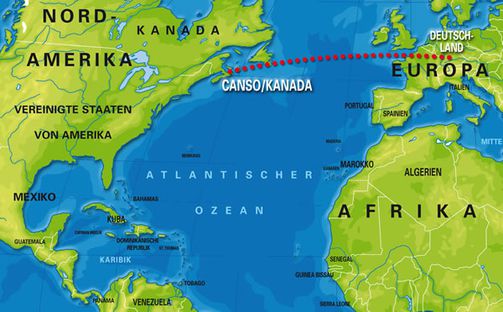
The ocean in front of Canso is full of underwater mountains and reefs. The depths range from 20 meters to 200 meters in combination with the Gulf current that delivers warm water to this area and builds up a really good basic for underwater life. Every year big schools of mackerel, herring, and squid, arrive in the waters of Canso, and at the same time porbeagles, mako, blue sharks and tuna follow these schools of smaller fish.
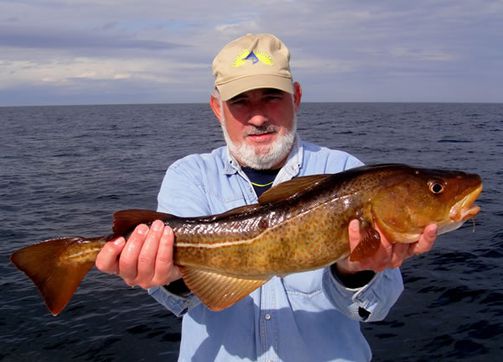
We were not able to book our trip before June 2009 because of the complicated issues with quota and regulations for the official catching season. We started on the 23rd of September with Condor leaving Frankfurt non-stop to Halifax, Nova Scotia. An additional three hour drive with a rental, we finally reached our destination – Canso. After we moved into our cozy cabins, Thomas introduced us to the Skippers and Crews.
They showed us their boats, tackle, and their newly built fighting chairs. The fighting chairs are even new for the skippers and crew onboard the boats. Before now they fought all the fish in the gimbal (swiveled rod holder) mounted on the side of the wash-board. The guys seemed really interested in our experience of fighting game fish stand-up, and in the chair.
All of us were really excited and could not wait until the next day. The 24th was our first fishing day and also the start of the official 2009 Tuna season for Canso. The crews and the teams are as followed: Heiko Steinmetz on Papa Knot-T-Bouys, we were on Nautical Odyssey, and Stefan Mayer-Mendel with Peter Kaeppel on Irish Towner. The three boats and crews, have had the most successful catches in the last few years according to statistics.

Our First Fishing Trip:
We met at 6:00 am with skipper Steve Meade (50) and crew member Donald Armsworthy (63) nickname ‘Duck’ at the boat. When we left the wharf it was still dark, and we headed towards the sunrise. On the way out we stopped to catch some fresh mackerels for bait. After intense searching of the surface, Steve gave the command to all of us ‘Guys lets have a try!’ The first mackerel was rigged up on the kite method. This method keeps the mackerel always close to the surface. (we want to explain this very fascinating method in more details in our second book of Bluewater Fishing. We even want to explain about finding the tuna with a fish finder and binoculars.) The second rod (called down-bait) is set up using a floating devise approximately 10 meters above the mackerel. Steve, Duck, Stephan and I, understood one another right from the beginning. Probably it was a coincidence or even Proteus that put a perfect fishing team together!?
At 8:00 am we had the first strike on the kite mackerel. One boil – The tuna attacks the mackerel at full speed, the release clip let the line go, the chafing gear that is connected to the rod took off with a big bang, and the line takes off in a hurry! After approximately fifteen minutes the tuna is on the boat. It’s a ‘small fish’ with approximately 180 pounds. With much care, we released the 8-0 circle hook from the tuna’s mouth. After this we towed the fish along side the boat for a short amount of time until he got his energy back enough to swim away on his own. On this day we caught three tunas between 150-200 pounds. All of the other boats are able to catch some tuna as well, but nothing bigger than 200 pounds.
All of the other boats are able to catch some tuna as well, but nothing bigger than 200 pounds.
Our moods are going down a little more as each day passes. Compared to the other years, we are higher in the amount of fish but considerably lower with the average fish weight. Having a big will to try and catch the big fish, we were the first to leave in the morning and the last to come ashore. The love for big game fishing and the never dying hope (the hope that the big fish will arrive) -pushes us out to the ocean day after day.
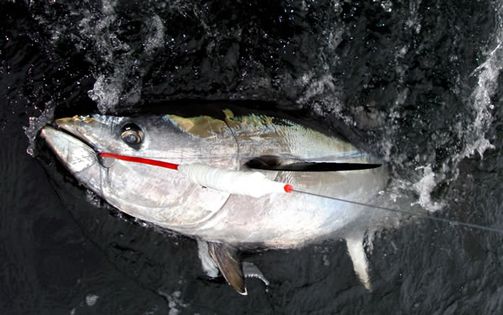
After the third day trip we have to take a break, the reason because of strong North West winds. Steve and Duck think that this is positive, because most times the big fish are coming in after strong wind. The local guys are thinking that rough winds and high seas are the best tuna weather.
The next day it seems that they are right – Heiko caught a fish 273 pounds, Stefan Mayer-Mendel caught a really nice blue shark, and we had two Bluefins over 200 pounds.
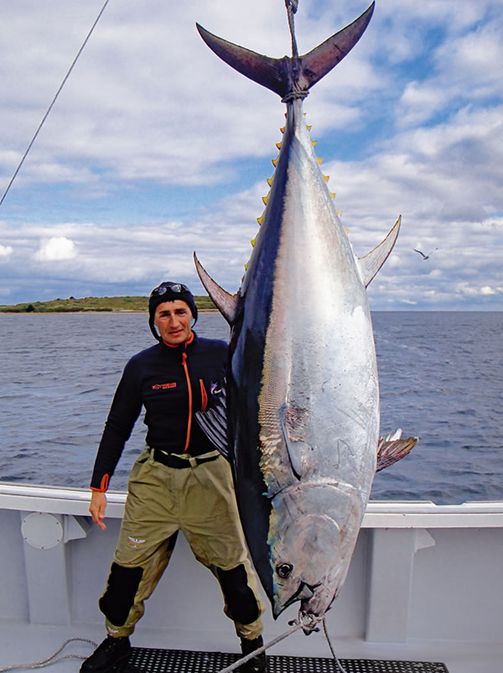
On the last day of the competition, Heiko caught a 336 pound fish early this morning, and we think we are not able to catch a bigger fish before the day is over. Without a warning we have a strong strike in the afternoon. Stephan is ready to take place in the fighting chair. After twenty-five minutes we land a beautiful Bluefin tuna and the crew guessed that it is over 500 pounds. At 5:30 pm the competition is over and Stephan is still number one. Stephan’s fish was a little big short in length, that why he ‘just’ had 444 pounds.
In the evening we had the award trophy and a nice get-together with great food. A real honor for us and the other anglers was a special guest Ken Fraser. Thomas invited his friend Ken to our get-together, and to hand the trophy to the award winner. Short information for people who don’t know who Ken Fraser is: He is a Tuna fishing pioneer, and caught on October 26th 1979 the 130 lbs. IGFA line class World Record Bluefin Tuna weighting 1496 lbs. He was one of the most successful tuna skippers of the world.
Our crew the evening were not partying that evening very late – as Steve and Duck know the bigger fish have arrived! Also, the next day, our plane is leaving in the evening, that why our time frame is pretty tight. A maximum of four hours of fishing and three hours back to the air port seems pretty stressful -but possible. At 5:00 am we meet Steve and Duck on the boat, and they were already waiting with a running engine. The last time this year – out in the dark on the Atlantic Ocean. It seems like Steve has a mysterious feeling this morning, with a combination of a kind of nervousness. He said he’s able to smell feeding whales and to locate them. He’s pretty sure that when you find the feeding whales there is herring, and that means there are big tuna there as well. After a half an hour we are on the open sea and it is still dark. On the horizon the sun is coming up really slow and we are witnessing a really lucky moment.
For us this was a magic fishing moment. At this moment Steve is operating the boat with just one foot, and the rest of his body hanging out the window with his nose stuck in the wind. Stephan and I were searching for birds and seals during this time, and suddenly Steve gave us the command ‘Guys, eject the baits immediately!’ We are right in the middle of a lot of seals and birds, and it seems like they are all waiting for something. The down bait is already out and we are just ready to set the kite. Not even twenty meters from the boat a seal is watching us, and he is swimming towards the down bait and starts diving. At the same time the floater goes down and the line starts to scream from the reel. Stephan looked at me and he gave me the chance to fight probable the last Bluefin for this year. I am sitting in the fighting chair and the fish on the other end is still taking line from the reel. I realized then what I have to do for the next hours. The first run the fish goes down deep and take a couple hundred meters of line. Just to get the chance to get some line back I have to puss the drag to a maximum.

As a well trained cyclist, I can handle this fish on 130 lb. gear pretty good. The only thing that makes me nervous is the 1.5mm mono leader and the small 8-0 hook. After 45 minutes the fish came to the surface for the first time but still approximately 100 meters from the boat. The boys were quietly whispering “Maybe bigger than…” Every time when I had some line back, the fish would then take more off the reel. That procedure was happened about ten times. Finally the fish comes to the boat and starts circling; that’s the dangerous part of a Bluefin fight – One little mistake the fish is diving under the boat! Steve is not only a professional with presenting the bait and finding the spots, he’s also handling his boat with perfection. All of a sudden the fish comes up to the surface not even 5 meters away from the boat – it seems like he is tired out and ready for landing. Just another three times cranking the reel, and the job is done. We are overwhelmed with excitement to have the possibility to catch such a wonderful creature at the ‘last minute’. Back the harbor at the weigh station, the scale stops at 791lbs. In a hurry we head back to the cabin to pack our luggage and we are on our way back to Halifax airport. After three hours on the highway, a quick check-in, and another six hours later, we are safe back in Frankfurt, Germany.
Resume:
- Three boats, five anglers, twenty five trips all together, sixty five hook-ups. – Fifty two Bluefin tunas were caught
- 42 bluefin tuna and two blue sharks were released. – All together we caught approximately 4000 kg of fish included by-catch. – Roughly 1000 kg we brought onshore under the regulations of ICCAT and Department of Fisheries and Oceans. – On some boats we used circle hooks
- The leaders had 200-250 pound test, and all anglers used 130lb rods in the fighting chair. – We caught with one of Roberto’s lures (special – tuna lure plus) approximately a 200lbs. bluefin. – Its not a common fishing technique in Canso.
- Tuna fishing is an absolute team work. All of the crew members have to search for active birds, dolphins, whales and seals. Even the catch of bait fish is team work. In spare time, crew members try and catch fresh bait, and that is sometimes a big advantage.
Catch report from all 3 Teams
| Datum | each Day | Peter | Heiko | Stefan M-M | Stephan K | Robert |
|---|---|---|---|---|---|---|
| 25. Sep | 5 | 1 | 1 | 0 | 2 | 1 |
| 26. Sep | 5 | 0 | 4 | 0 | 0 | 1 |
| 27. Sep | 8 | 0 | 1 | 1 | 3 | 3 |
| 28. Sep | Strong Wind | – | – | – | – | – |
| 29. Sep | 11 | 1 | 2 + 1 (273) = 3 | 1 | 2 (+ 1*) = 3 | 3 |
| 30. Sep | 0 | 0 | Not out | 0 | 0 | 0 |
| 01. Oct | 4 + 1 BS | 1 (177) | Not out | 1 BS (240) | 2 (250) | 1 |
| 02. Oct | 7 | 2 | Not out | 1 | 3 | 1 (270) |
| 03. Oct | 3 | 0 | Not out | 0 | 1 | 2 |
| 04. Oct | 4 +1 BS | 0 | Not out | 1 | 2 | 1 + 1 BS (100) |
| 05. Oct | Strong Wind | – | – | – | – | – |
| 06. Oct | 4 | 1 | 1 (372) | 0 | 1 (444) | 1 (280) |
| 07. Oct (4 h) | 1 | Not out | Not out | Not out | 0 | 1 (791) |
| All together | 52 +2 BS | 6 | 10 | 4 + 1 BS | 16 (+ 1*) = 17 | 15 + 1 BS |
The Abbreviation “BS” stands for Blue Shark. All others without the abbreviation automatically means bluefin tuna. The bluefin tunas we released were all between 150 – 200lbs.
*Duck caught in the past seventeen years a couple of hundred tuna, and a dozen granders. He never fought on fish in the fighting chair – we changed that, and we wanted to show him the positive effects of fighting with a chair.
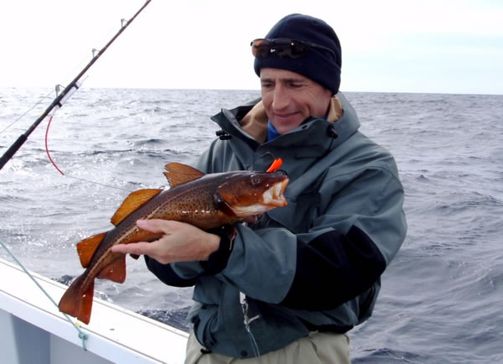
Things we want to mention:
- When the tunas are not in their feeding frenzy, we caught cod fish, Pollack, mackerels, sculpins, red fish, herring, and perch up to a maximum of 5kg each. We think when you concentrate on them kind of fish with the right technique and tackle, you can catch fish until your arm falls off. There is even a good possibility to catch a big halibut.
- The scenery around Canso has its own charm. Thick woods around the countless lakes and the ocean.
- We seen a big amount of dolphins, seals and sometimes whales.
- On land you can see black bears, moose, coyotes, porcupines, and bald eagles.
- The local people are very friendly, honest, strait forward and helpful. Really nice people to spend your time with.
- At private invitations the food is really good. In restraints you more less find just fast-food.
- Night life – Zero. Sometimes you hear some screaming coyotes, and with a little bit of luck you can watch a fox or a ‘bunny’ – but them ones with the big ears!

Stephan Kreupl and Robert Rein in October 2009
